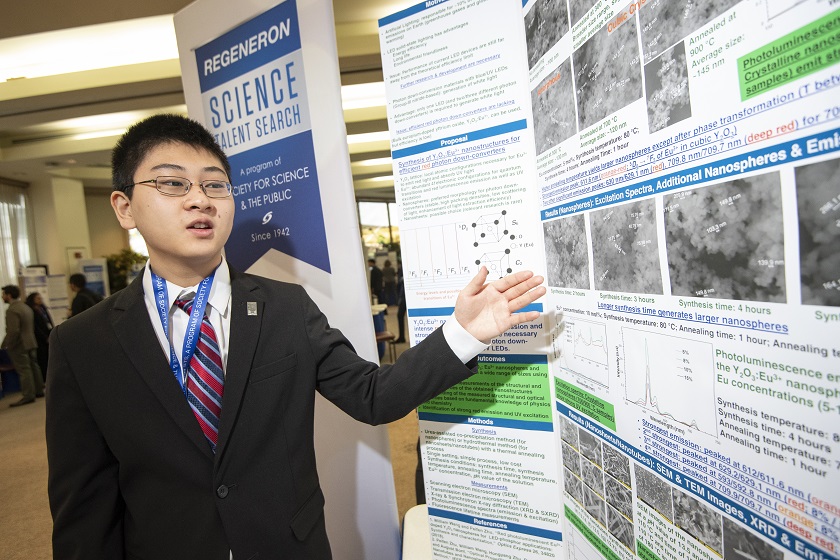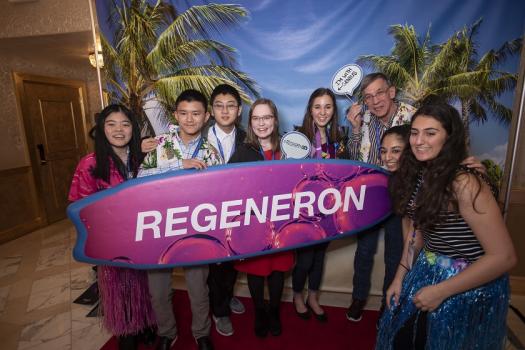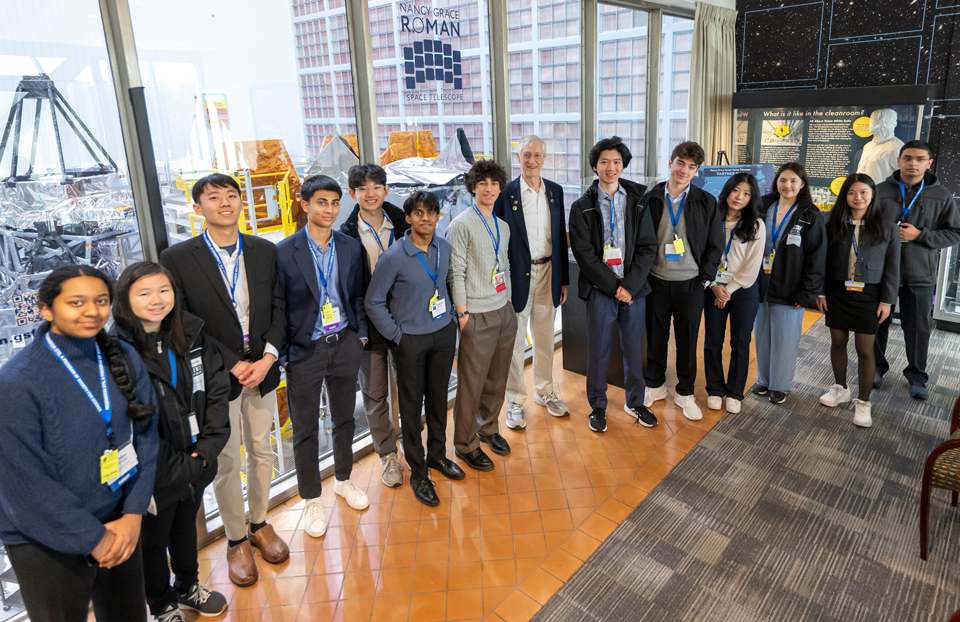Two STS alumni, separated by 37 years, share a passion for science

Frank Wang (STS 1982) and William Wang (STS 2019) have a shared passion for science. Though they are generations apart, the two were both finalists of the Science Talent Search and are both at the same school! Frank Wang was a Science Talent Search finalist in 1982. Thirty-seven years later, his student, William, a senior at the Oklahoma School of Science and Mathematics, where Frank presides as President, was named a 2019 Regeneron Science Talent Search (STS) finalist as well.
When William was applying, he did not know Frank was a finalist many years before him; only that he had been a top 300 scholar. William’s brother, George Wang, who was a 2018 STS scholar, shared the fun fact. For Frank, hearing news about William being named a finalist brings back fond memories of his experience three decades ago.
“William told me that there were two top 40 finalists from Oklahoma this year. Wow. Back when I was a top 40 finalist, there was not a finalist from Oklahoma for some years before and after when I was a finalist,” remembers Frank.

William’s STS project is focused on the generation and application of nanomaterials (materials with very tiny sizes—in the scale of nanometers). “I used chemical methods to obtain several nanostructures and found that the nanomaterials can emit intense red light, which can combine with LEDs to generate white light with high efficiency. This research could potentially advance lighting technology by increasing energy efficiency, which would lead to lower power costs, help decrease carbon emissions and help combat global warming,” explains William.
“From an early age, I became concerned that global warming might lead to extreme climate, environment and settlement changes that negatively impact people’s lives and threaten the future of mankind. As I studied more, I thought science and technology would be an effective tool to help combat global warming.” Armed with an aspiration to do something, William joined a lab at the University of Tulsa as a volunteer researcher his sophomore year of high school.
William was just 15-16 months old when his parents exposed him to STEM fields at Nashville’s Adventure Science Center. “According to them, I inspected models of the solar system and the human body and played with prisms, musical instruments and mini-dams, until the staff had to escort us out as I was reluctant to leave. Since then, I’ve enjoyed exploring science and nature anytime I have the chance to.” William’s travels can attest to this—he’s already visited over 50 science and nature museums and 40 national parks and monuments!
As an educator, Frank noted how “the research that young people are doing today is much more advanced than when I was a student. They have greater access to specialized equipment, laboratories and computers. When I was a student, I was running programs on Radio Shack TRS-80 computers and had up to 48 Kb of RAM, which seemed like a lot to me at the time.”

William said, “I enjoyed pretty much all the activities in the finalist week. I particularly enjoyed meeting and talking to other finalists across the field and scientific leaders such as Dr. George Yancoupoulos, Chief Scientific Officer of Regeneron. The activities have inspired me to make even greater efforts in my scientific research.” William’s experience has furthered his commitment to engage in full-time research during the summer before college. He plans to work in nanoscience and nanotechnology “with the ultimate goal of benefitting society.”
Frank hopes William will stay in contact with the other STS finalists like he did. “I still keep in touch with some fellow STS’ers some 37 years later. One fellow 1982 STS’er I crossed paths with was the prodigy Noam Elkies. Noam got his PhD in math from Harvard at age 20 and was a faculty member at Harvard when I was still a graduate student in math at MIT.”
For those who are interested in applying for next year’s STS, here’s a pro-tip from Frank to start preparing: “In 1983, I was contacted by a student named Michael Hyman (ISEF 1982, STS 1983) who was one of the top 40 finalists that year, asking for advice. I advised that he assemble panels of people to throw him a bunch of random questions on science and math. He ended up winning second place. I advised William to do the same.”


